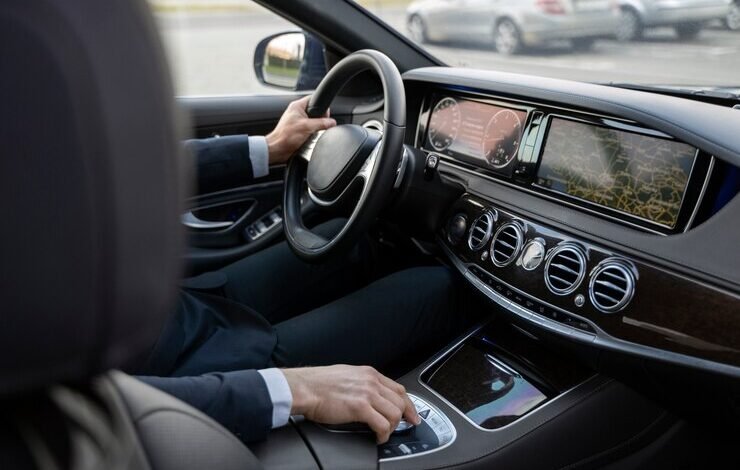Why autobà is Revolutionizing the Automotive Industry

In an era where innovation and sustainability are the dual engines driving progress, autobà emerges as a groundbreaking concept in the automotive world. This blog post dives deep into the essence of autobà, tracing its roots, evolution, and the significant role it plays today. Whether you’re an industry enthusiast or simply curious about the future of transportation, you’ll discover why autobà is becoming a pivotal element in redefining mobility.
What is autobà?
Autobà is more than just a buzzword; it’s a game-changer in the automotive industry. At its core, autobà represents an integrated system that combines advanced technology with sustainable practices to enhance vehicle performance and efficiency. The term itself may be new to many, but its impact is profound.
The concept of autobà dates back several decades, rooted in the need for smarter, more eco-friendly transportation solutions. Initially, it focused on improving fuel efficiency and reducing emissions. Over time, autobà has expanded to include electric and hybrid technologies, autonomous driving capabilities, and smart infrastructure integration.
In essence, autobà is about creating a seamless, efficient, and sustainable automotive ecosystem. Its relevance today cannot be overstated, as it addresses some of the most pressing concerns of our time, including climate change, urban congestion, and the need for cleaner energy sources.
The Evolution of autobà
The autobà concept has undergone significant transformation since its inception. Early iterations were primarily concerned with mechanical efficiency, aiming to squeeze more miles out of a gallon of fuel. However, as technology advanced, so did the scope of autobà.
One of the most notable shifts occurred with the advent of electric vehicles (EVs). These vehicles marked a departure from traditional internal combustion engines, offering a cleaner and more efficient alternative. Companies like Tesla spearheaded this movement, making electric cars not only feasible but desirable.
Autonomous driving technology further propelled the evolution of autobà. With self-driving cars now a reality, the focus has shifted towards creating vehicles that are not only efficient but also intelligent. These cars can make real-time decisions, communicate with other vehicles, and adapt to changing road conditions, all while minimizing human intervention.
Sustainable practices have also become integral to autobà. From using recyclable materials in manufacturing to implementing energy-efficient production processes, the automotive industry is increasingly prioritizing sustainability. This holistic approach ensures that every aspect of a vehicle’s lifecycle, from production to disposal, aligns with environmental goals.
autobà and the Environment
Autobà’s commitment to the environment is a key aspect of its appeal. Traditional vehicles have long been associated with pollution and greenhouse gas emissions. Autobà aims to mitigate these issues through innovative solutions that prioritize environmental sustainability.
Electric and hybrid vehicles are central to this mission. By reducing or eliminating reliance on fossil fuels, these vehicles significantly lower emissions. In fact, studies have shown that electric vehicles produce about half the emissions of their gasoline counterparts over their lifecycle, even when accounting for electricity generation.
Autobà also promotes the use of renewable energy sources. Many electric vehicles are now charged using solar or wind power, further reducing their carbon footprint. This shift towards clean energy is crucial in the fight against climate change.
Another environmental benefit of autobà is the emphasis on efficient use of resources. Modern vehicles are designed to be more durable and require less maintenance, reducing the need for frequent replacements and minimizing waste. Additionally, recycling and reusing materials in car manufacturing contribute to a circular economy, where resources are continuously repurposed rather than discarded.
The Future of autobà
The future of autobà is bright and full of potential. Innovations in technology and sustainability continue to push the boundaries of what is possible in the automotive industry. Here are some predictions and insights into what the future might hold.
First, we can expect further advancements in autonomous driving technology. Self-driving cars are already on the roads, but they are likely to become even more sophisticated. Future autonomous vehicles will be able to handle complex driving scenarios with ease, making transportation safer and more accessible.
Electrification will continue to play a major role in the future of autobà. With governments around the world setting ambitious targets for reducing emissions, the shift towards electric vehicles will accelerate. Battery technology is also advancing, promising longer ranges and shorter charging times, making electric vehicles more convenient for everyday use.
Sustainable manufacturing practices will become the norm. The automotive industry will increasingly adopt eco-friendly materials and processes, reducing its environmental impact. This includes everything from using recycled materials to implementing energy-efficient production methods.
Finally, smart infrastructure will complement the autobà ecosystem. Cities will be equipped with intelligent transportation systems that seamlessly integrate with autonomous and electric vehicles. This will create a more efficient and connected transportation network, reducing congestion and improving urban mobility.
Conclusion
Autobà is not just a trend; it’s a revolution transforming the automotive industry. By combining advanced technology with sustainable practices, autobà addresses some of the most pressing challenges of our time. From reducing emissions to improving efficiency and safety, the benefits of autobà are far-reaching.



